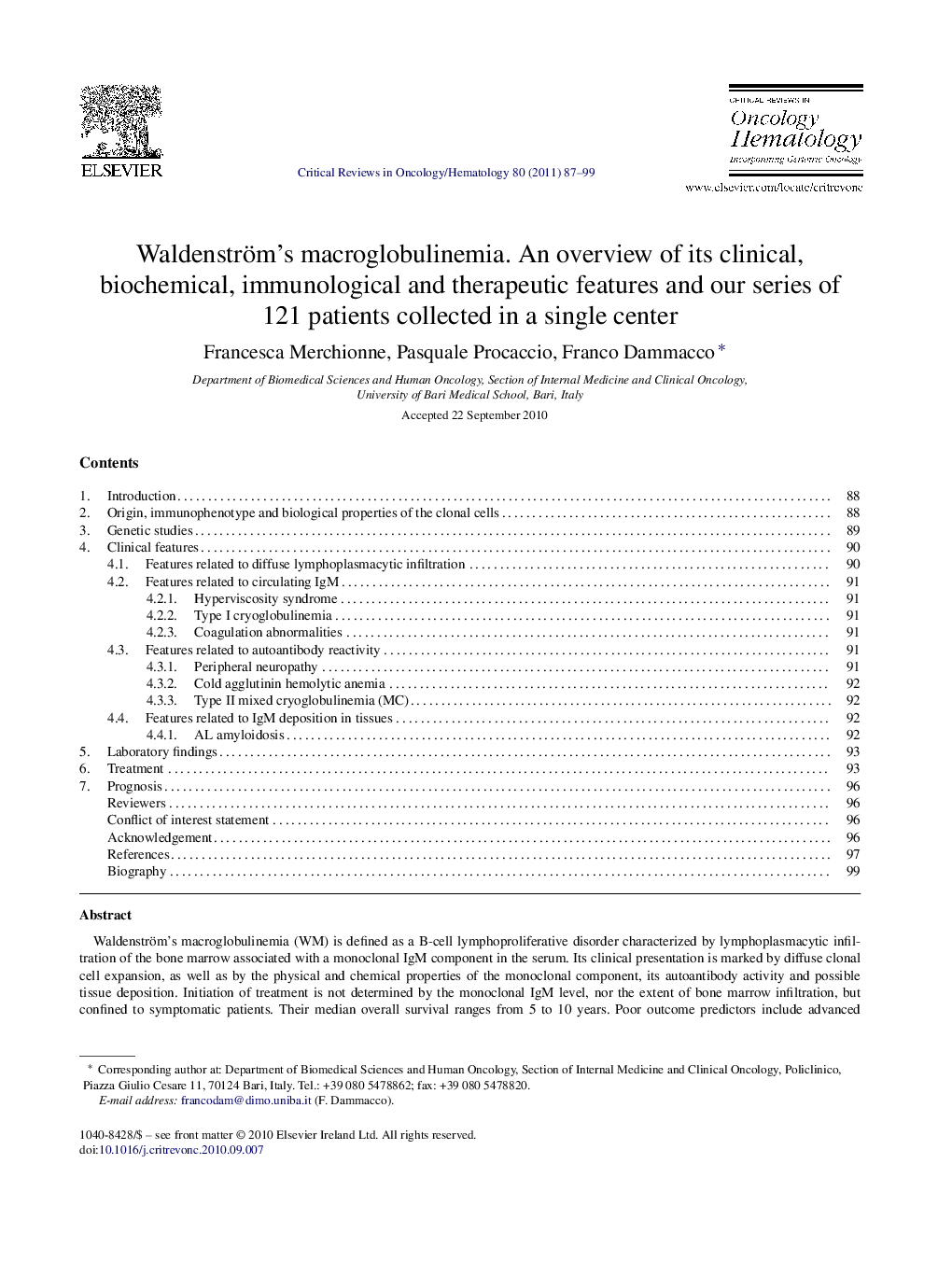| Article ID | Journal | Published Year | Pages | File Type |
|---|---|---|---|---|
| 3329212 | Critical Reviews in Oncology/Hematology | 2011 | 13 Pages |
Waldenström's macroglobulinemia (WM) is defined as a B-cell lymphoproliferative disorder characterized by lymphoplasmacytic infiltration of the bone marrow associated with a monoclonal IgM component in the serum. Its clinical presentation is marked by diffuse clonal cell expansion, as well as by the physical and chemical properties of the monoclonal component, its autoantibody activity and possible tissue deposition. Initiation of treatment is not determined by the monoclonal IgM level, nor the extent of bone marrow infiltration, but confined to symptomatic patients. Their median overall survival ranges from 5 to 10 years. Poor outcome predictors include advanced age, low hemoglobin levels, low platelet count, high β2-microglobulin and high concentration of the serum monoclonal component. First-line therapeutic approaches include alkylating agents (chlorambucil, melphalan, cyclophosphamide), nucleoside analogs (fludarabine, cladribrine), and rituximab, whether singly or combined. Thalidomide-based regimens and bortezomib have also been assessed, and new agents such as bendamustine and everolimus are being investigated. We review these general features and describe our series of 121 patients with clearly established WM.
